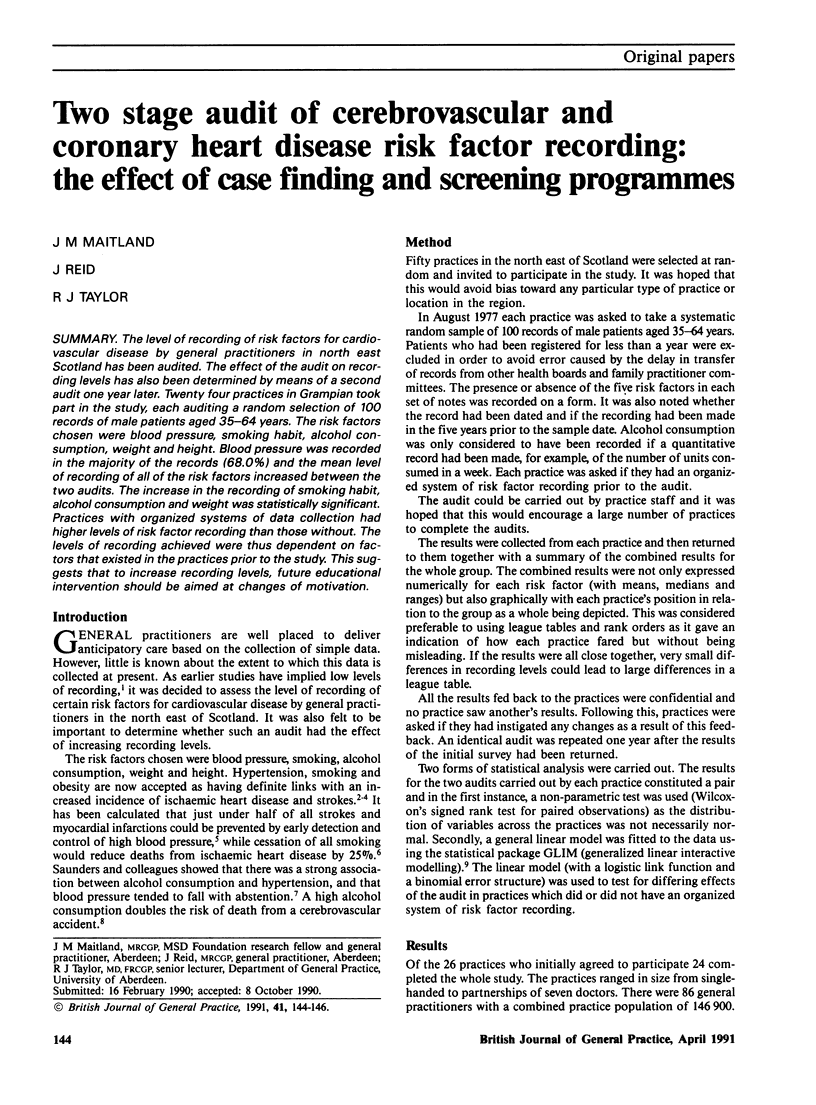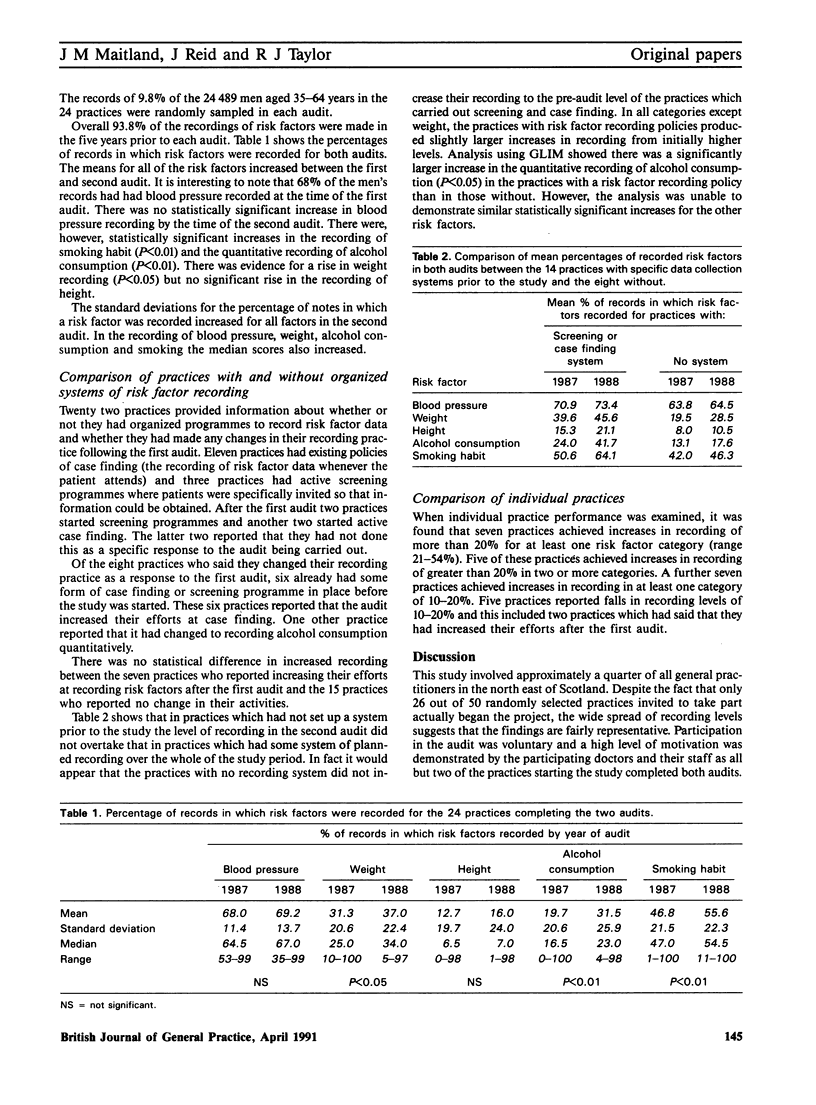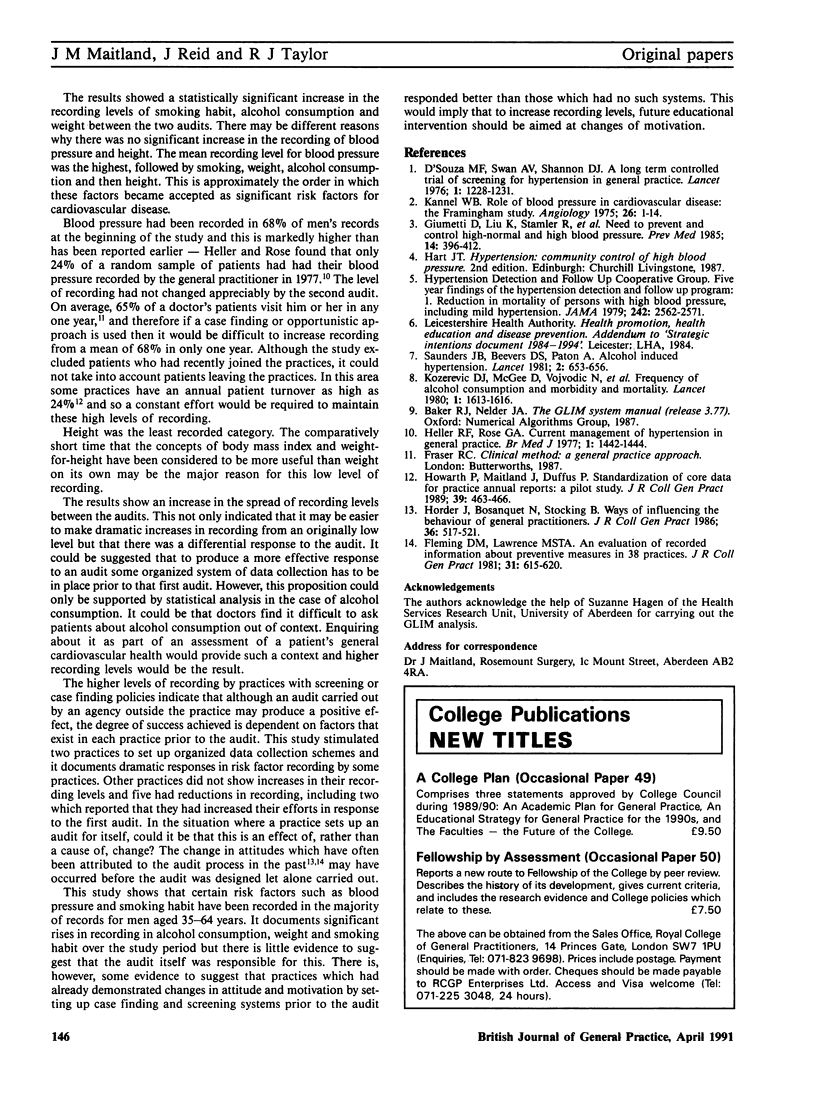Abstract
The level of recording of risk factors for cardiovascular disease by general practitioners in north east Scotland has been audited. The effect of the audit on recording levels has also been determined by means of a second audit one year later. Twenty four practices in Grampian took part in the study, each auditing a random selection of 100 records of male patients aged 35-64 years. The risk factors chosen were blood pressure, smoking habit, alcohol consumption, weight and height. Blood pressure was recorded in the majority of the records (68.0%) and the mean level of recording of all of the risk factors increased between the two audits. The increase in the recording of smoking habit, alcohol consumption and weight was statistically significant. Practices with organized systems of data collection had higher levels of risk factor recording than those without. The levels of recording achieved were thus dependent on factors that existed in the practices prior to the study. This suggests that to increase recording levels, future educational intervention should be aimed at changes of motivation.
Full text
PDF


Selected References
These references are in PubMed. This may not be the complete list of references from this article.
- D'Souza M. F., Swan A. V., Shannon D. J. A long-term controlled trial of screening for hypertension in general practice. Lancet. 1976 Jun 5;1(7971):1228–1231. doi: 10.1016/s0140-6736(76)92172-3. [DOI] [PubMed] [Google Scholar]
- Fleming D. M., Lawrence M. S. An evaluation of recorded information about preventive measures in 38 practices. J R Coll Gen Pract. 1981 Oct;31(231):615–620. [PMC free article] [PubMed] [Google Scholar]
- Giumetti D., Liu K., Stamler R., Schoenberger J. A., Shekelle R. B., Stamler J. Need to prevent and control high-normal and high blood pressure, particularly so-called "mild" hypertension: epidemiological and clinical data. Prev Med. 1985 Jul;14(4):396–412. doi: 10.1016/0091-7435(85)90002-7. [DOI] [PubMed] [Google Scholar]
- Heller R. F., Rose G. Current management of hypertension in general practice. Br Med J. 1977 Jun 4;1(6074):1442–1444. doi: 10.1136/bmj.1.6074.1442. [DOI] [PMC free article] [PubMed] [Google Scholar]
- Horder J., Bosanquet N., Stocking B. Ways of influencing the behaviour of general practitioners. J R Coll Gen Pract. 1986 Nov;36(292):517–521. [PMC free article] [PubMed] [Google Scholar]
- Howarth F. P., Maitland J. M., Duffus P. R. Standardization of core data for practice annual reports: a pilot study. J R Coll Gen Pract. 1989 Nov;39(328):463–466. [PMC free article] [PubMed] [Google Scholar]
- Kannel W. B. Role of blood pressure in cardiovascular disease: the Framingham Study. Angiology. 1975 Jan;26(1 Pt 1):1–14. doi: 10.1177/000331977502600101. [DOI] [PubMed] [Google Scholar]
- Saunders J. B., Beevers D. G., Paton A. Alcohol-induced hypertension. Lancet. 1981 Sep 26;2(8248):653–656. doi: 10.1016/s0140-6736(81)90995-8. [DOI] [PubMed] [Google Scholar]


